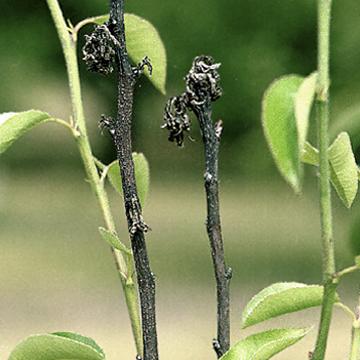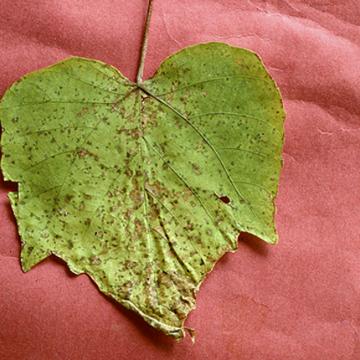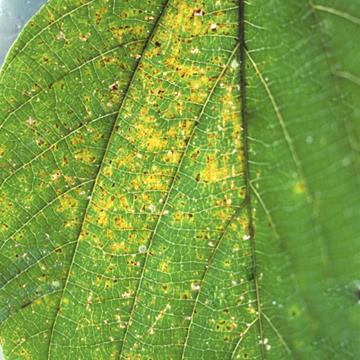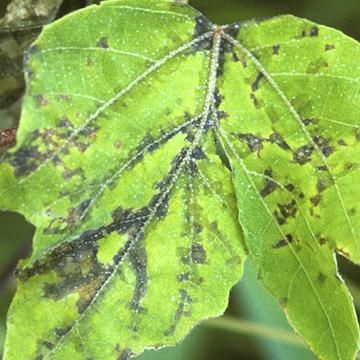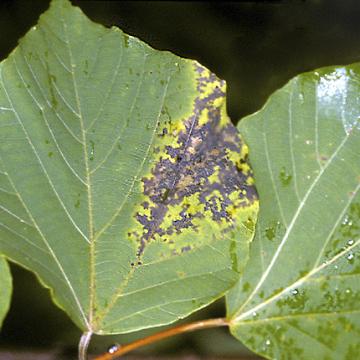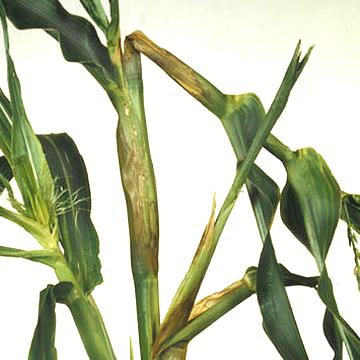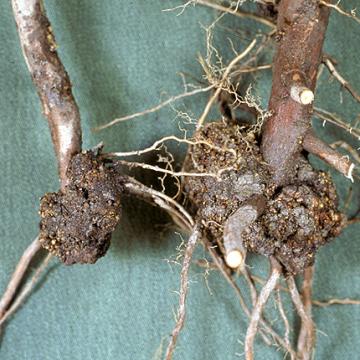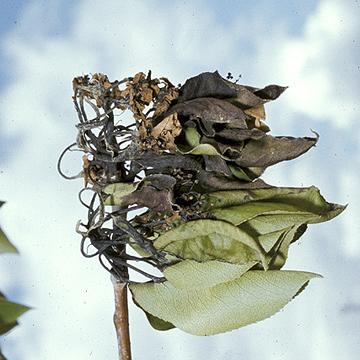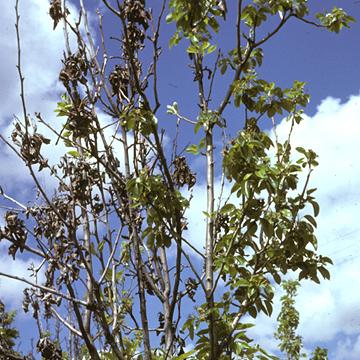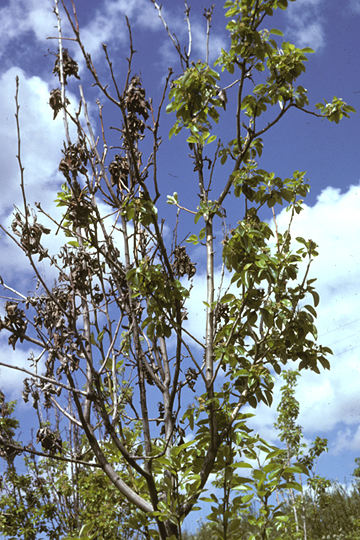DISEASE: Bacterial blast
HOST: Pear
The bacterium infects all flower parts and may spread and kill the entire spur.
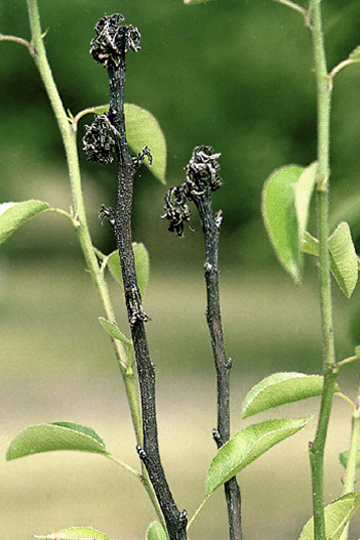
Bacterial blast | Pear
DISEASE: Bacterial blast
HOST: Pear (Pyrus communis)
PATHOGEN: Pseudomonas syringae pv. syringae
SOURCE: W. Sinclair
DISEASE: Bacterial brown spot
HOST: Mallotus
Leaf with small, rustylike lesions.
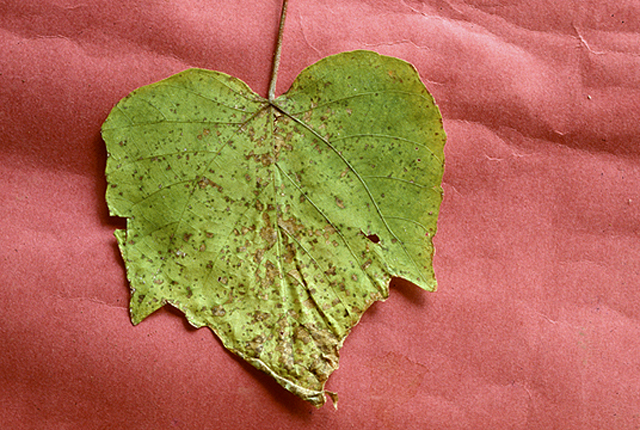
Bacterial brown spot | Mallotus
DISEASE: Bacterial brown spot
HOST: Mallotus (Mallotus japonicus)
PATHOGEN: Xanthomonas campestris pv. malloti
SOURCE: M. Goto
DISEASE: Bacterial brown spot
HOST: Mallotus
Leaf with tiny, light brown spots surrounded by chlorotic zones.
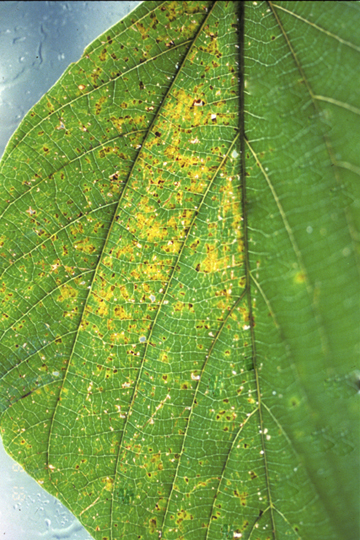
Bacterial brown spot | Mallotus
DISEASE: Bacterial brown spot
HOST: Mallotus (Mallotus japonicus)
PATHOGEN: Xanthomonas campestris pv. malloti
SOURCE: M. Kobayashi, M. Goto
DISEASE: Bacterial leaf spot
HOST: Mallotus
Leaf with dark and water-soaked lesions along veins.
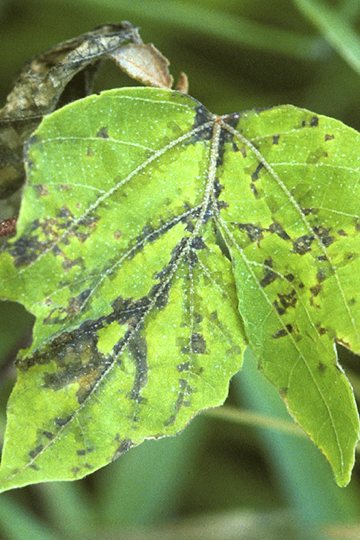
Bacterial leaf spot | Mallotus
DISEASE: Bacterial leaf spot
HOST: Mallotus (Mallotus japonicus)
PATHOGEN: Erwinia mallotivora
SOURCE: M. Kobayashi, M. Goto
DISEASE: Bacterial leaf spot
HOST: Mallotus
Leaves with water-soaking, and one also with dark spots surrounded by chlorotic tissues.
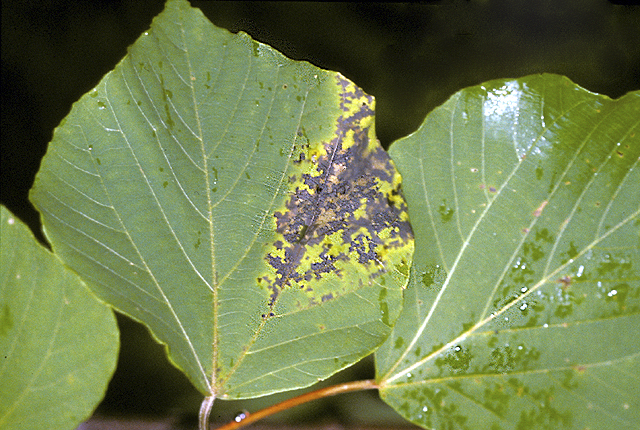
Bacterial leaf spot | Mallotus
DISEASE: Bacterial leaf spot
HOST: Mallotus (Mallotus japonicus)
PATHOGEN: Erwinia mallotivora
SOURCE: M. Kobayashi, M. Goto
DISEASE: Bacterial stalk and top rot
HOST: Corn (Maize)
Corn exhibiting symptoms at early stage of disease. Note water-soaked external stalk tissues.
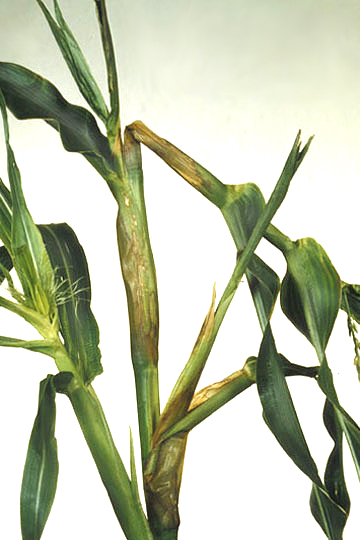
Bacterial stalk and top rot | Corn (Maize)
DISEASE: Bacterial stalk and top rot
HOST: Corn (Maize) (Zea mays 'Pukekohe')
PATHOGEN: Dickeya zeae
PATHOGEN SYNONYM: Erwinia chrysanthemi pv. zeae
SOURCE: J. Young
DISEASE: Crown gall
HOST: Pear
Crown gall of pear rootstock.
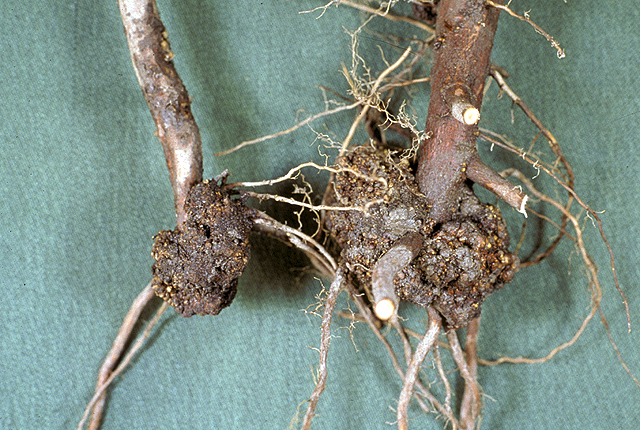
Crown gall | Pear
DISEASE: Crown gall
HOST: Pear (Pyrus communis)
PATHOGEN: Agrobacterium tumefaciens
PATHOGEN SYNONYM: Rhizobium sp.
SOURCE: H. Sawada, M. Goto
DISEASE: Fire blight
HOST: Pear
Blighted shoot and blossoms.
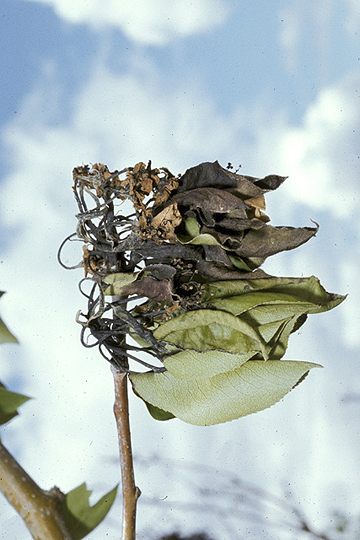
Fire blight | Pear
DISEASE: Fire blight
HOST: Pear (Pyrus communis)
PATHOGEN: Erwinia amylovora
SOURCE: M. Schroth


